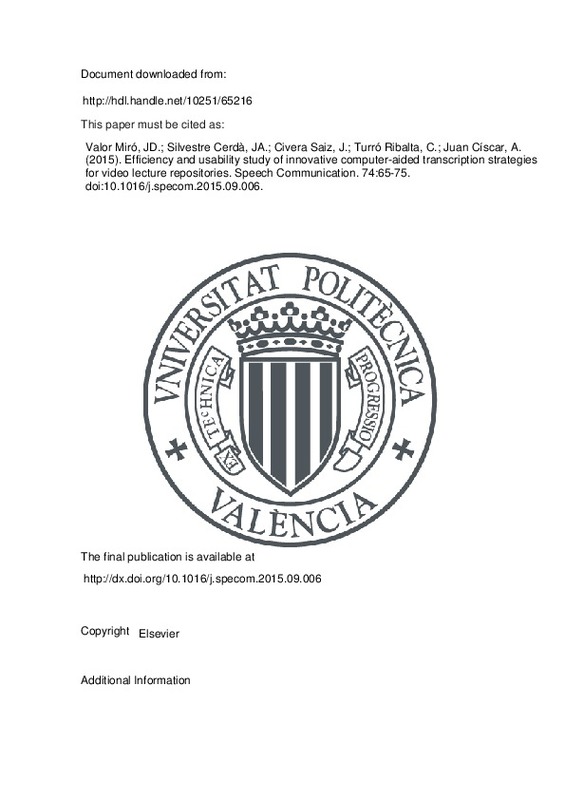JavaScript is disabled for your browser. Some features of this site may not work without it.
Buscar en RiuNet
Listar
Mi cuenta
Estadísticas
Ayuda RiuNet
Admin. UPV
Efficiency and usability study of innovative computer-aided transcription strategies for video lecture repositories
Mostrar el registro completo del ítem
Valor Miró, JD.; Silvestre Cerdà, JA.; Civera Saiz, J.; Turró Ribalta, C.; Juan Císcar, A. (2015). Efficiency and usability study of innovative computer-aided transcription strategies for video lecture repositories. Speech Communication. 74:65-75. https://doi.org/10.1016/j.specom.2015.09.006
Por favor, use este identificador para citar o enlazar este ítem: http://hdl.handle.net/10251/65216
Ficheros en el ítem
Metadatos del ítem
| Título: | Efficiency and usability study of innovative computer-aided transcription strategies for video lecture repositories | |
| Autor: | ||
| Entidad UPV: |
|
|
| Fecha difusión: |
|
|
| Resumen: |
[EN] Video lectures are widely used in education to support and complement face-to-face lectures. However, the utility of these audiovisual
assets could be further improved by adding subtitles that can be exploited to ...[+]
|
|
| Palabras clave: |
|
|
| Derechos de uso: | Reserva de todos los derechos | |
| Fuente: |
|
|
| DOI: |
|
|
| Editorial: |
|
|
| Versión del editor: | http://dx.doi.org/10.1016/j.specom.2015.09.006 | |
| Código del Proyecto: |
|
|
| Agradecimientos: |
The research leading to these results has received funding from the European Union Seventh Framework Programme (FP7/2007-2013) under Grant agreement no. 287755 (transLectures) and ICT Policy Support Programme (ICT ...[+]
|
|
| Tipo: |
|







![[Cerrado]](/themes/UPV/images/candado.png)


